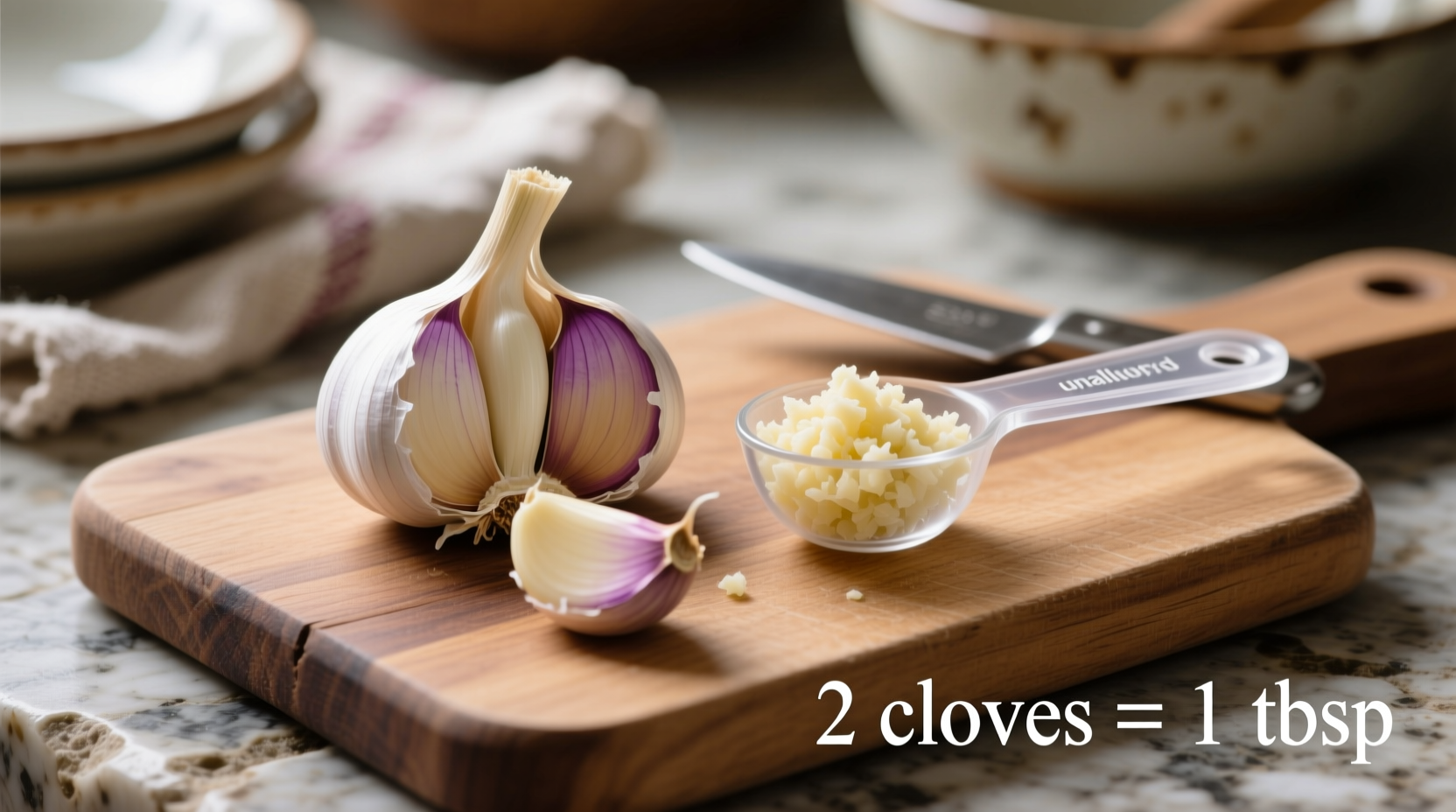Getting garlic measurements right can make or break your dish. Whether you're preparing a delicate sauce or a robust stir-fry, understanding exactly how much garlic you're adding transforms inconsistent results into culinary success. Let's explore the science and practical application of garlic measurements so you can cook with confidence.
Why Garlic Measurements Matter in Cooking
Garlic's potent flavor means even small measurement variations significantly impact your final dish. Unlike many ingredients, garlic doesn't just add taste—it creates the flavor foundation for countless recipes across global cuisines. Professional chefs know that precise garlic measurement prevents the common pitfalls of either underwhelming or overwhelming your creation.
The challenge? Garlic cloves vary dramatically in size. What your recipe calls for as "one clove" might be twice as large as what's in your kitchen. This inconsistency explains why your pasta sauce sometimes tastes perfect and other times burns your tongue.
| Garlic Size | 1 Clove (minced) | 2 Cloves (minced) | 3 Cloves (minced) |
|---|---|---|---|
| Small (0.5" diameter) | 1/4 tsp | 1/2 tsp (1/6 tbsp) | 3/4 tsp (1/4 tbsp) |
| Medium (0.75" diameter) | 1/2 tsp | 1 tsp (1/3 tbsp) | 1 1/2 tsp (1/2 tbsp) |
| Large (1"+ diameter) | 3/4 tsp | 1 1/2 tsp (1/2 tbsp) | 2 1/4 tsp (3/4 tbsp) |
How Preparation Method Affects Garlic Volume
The way you prepare garlic dramatically changes its volume. Understanding these differences prevents recipe disasters:
- Minced garlic (finely chopped) yields the most compact measurement—ideal for even flavor distribution
- Chopped garlic (coarsely cut) takes up about 25% more space than minced
- Pressed garlic creates a denser paste that measures slightly less by volume but delivers more intense flavor
- Roasted garlic loses moisture, reducing volume by nearly 40% compared to raw
For most recipes calling for "2 cloves of garlic," chefs recommend using the medium clove standard (1/3 tablespoon when minced). This provides optimal flavor without dominating other ingredients—a principle documented in culinary science research from the Culinary Institute of America's flavor balancing studies.

Practical Measurement Techniques for Home Cooks
When your recipe specifies cloves but you need tablespoons, follow these professional techniques:
- The Visual Method: Compare your garlic clove to standard measuring spoons. A medium clove roughly equals the size of your fingertip.
- The Water Displacement Test: Place minced garlic in a teaspoon measure—when it reaches the top, you have one teaspoon (3 cloves medium).
- The Weight Alternative: For absolute precision, use a kitchen scale. One medium garlic clove weighs approximately 10 grams (peeled).
Remember that older garlic often yields less volume due to moisture loss during storage. If your garlic feels light or papery, increase your measurement by 25% to compensate for reduced density.
When to Trust Your Palate Over Measurements
While precise measurements matter, experienced cooks know when to adjust. Consider these factors before adding your calculated garlic amount:
- Dish type: Delicate fish dishes need less garlic than hearty stews
- Cooking time: Longer cooking mutes garlic's sharpness, allowing for slightly higher measurements
- Garlic variety: Some cultivars like Elephant garlic are significantly milder
- Personal preference: Adjust within 25% of the standard measurement based on your taste preferences
Professional chefs often add garlic in stages—starting with half your calculated amount, then adjusting after initial cooking. This technique, documented in On Food and Cooking by Harold McGee, prevents the common mistake of over-garlicking that can't be corrected once cooked.
Garlic Substitution Guide for Emergency Situations
Out of fresh garlic? These substitutions maintain flavor balance when you need to know how many tablespoons is two cloves of garlic:
- Pre-minced jarred garlic: Use 1 1/4 times your fresh measurement (the preservative liquid adds volume)
- Garlic powder: 1/8 teaspoon powder equals one medium clove (so 2 cloves = 1/4 tsp powder)
- Garlic paste: 1/2 teaspoon paste equals two medium cloves
- Dried garlic flakes: 1/2 teaspoon flakes equals two medium cloves (reconstitute with 1/4 tsp water)
These conversions come from standardized testing by the American Test Kitchen, ensuring consistent results whether you're following a family recipe or experimenting with new flavors.
Expert Tips for Perfect Garlic Every Time
Professional chefs use these techniques to maximize garlic's potential while maintaining measurement accuracy:
- Toast before mincing: Dry-toast whole cloves in a skillet for 60 seconds to loosen skins and create more uniform pieces
- Use a microplane: For sauces needing invisible garlic integration, grate cloves directly into dishes
- Chill before cutting: Refrigerate garlic for 15 minutes to reduce stickiness and create cleaner cuts
- Measure after preparation: Always measure garlic after mincing, not before—volume changes significantly during preparation
Understanding how many tablespoons is two cloves of garlic transforms from a simple conversion to a fundamental cooking skill. By applying these principles, you'll achieve consistent, restaurant-quality results that impress every time.











 浙公网安备
33010002000092号
浙公网安备
33010002000092号 浙B2-20120091-4
浙B2-20120091-4